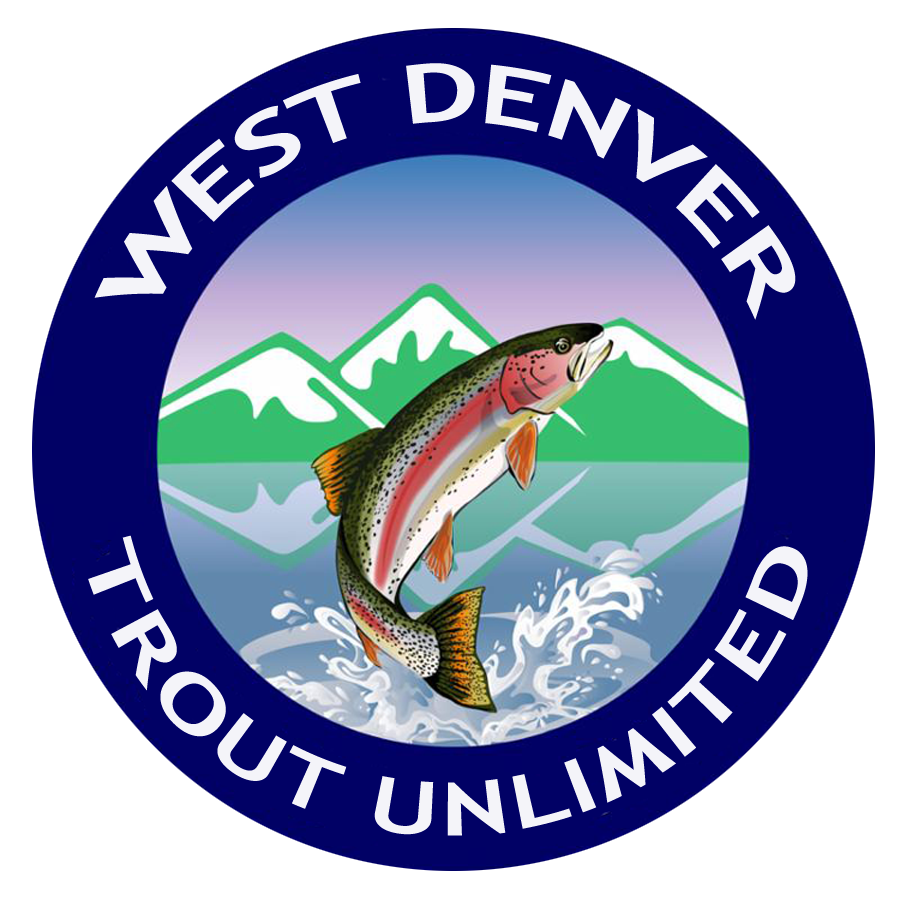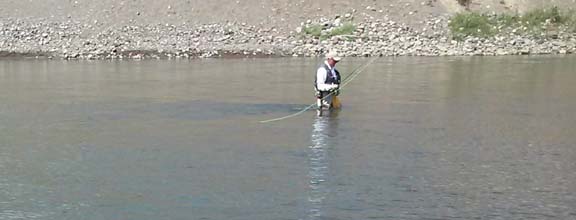Fly Fishing to Save Cutthroats in Yellowstone National Park
written by Rick Dornfeld, WDTU Conservation Director
During the summer of 2015, WDTU members Tim Toohey, Randy Cordova, Rick Dornfeld, Ed Calmus, and Keith Greenwell volunteered in a Yellowstone National Park research project. We caught cutthroats,rainbows,and hybrids (specimens) with fly fishing equipment and handed them over to the research folks waiting patiently on the streambank. The fish were studied, data were recorded, and the fish were released back into the water. If this kind of “work” appeals to you, read on because WDTU will be sending a crew back to Yellowstone during the week of July 18th through the 22nd next summer.
First a couple of names to recognize: Bill Voigt runs the Volunteer Fly Fishing Program in the park; Kurt Heim is the PhD student at Montana State University who designed and is conducting the research project. Kurt supplied all the information to me for this newsletter article.
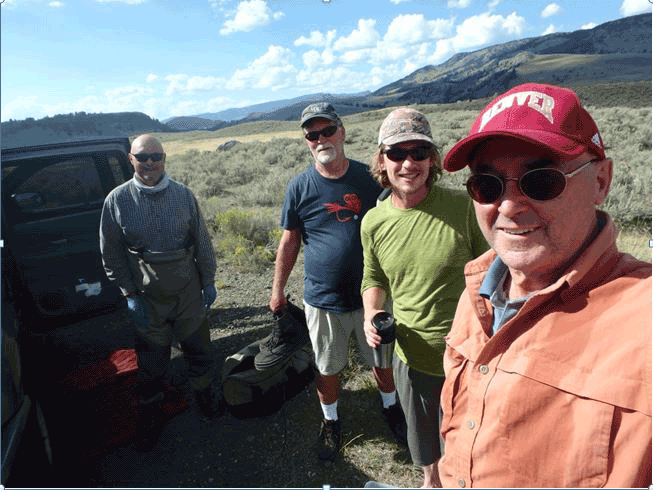
Randy Cordova, Tim Toohey, Kurt Heim and Rick Dornfeld
getting geared up to hike into the Lamar River.
Yellowstone cutthroat trout (YCT) is a fish native to the park that is known as a “keystone species” because it provides an important source of food for many species of birds and mammals. They are also fun to catch. Unfortunately, these fish are threatened by introduced non-native fish. You have probably heard about the introduction of lake trout into Yellowstone Lake which has contributed to a severe decline in the YCT population. Less publicized is the invasion of rainbow trout (RBT) into the Lamar River Watershed, including Slough Creek. The concern in the Lamar is that RBT may out-compete or displace native YCT and hybridize with them, which dilutes the locally adapted genetics and can lead to the loss of unique genetic diversity in the species. Saving the natives is a big deal in Yellowstone NP. It is serious business to manage the park FOR the native trout, bison, wolves, orchids, frogs, etc and to control the further spread of the non-native invaders including RBT, brook trout, New Zealand mud snails and Dalmatian toadflax.
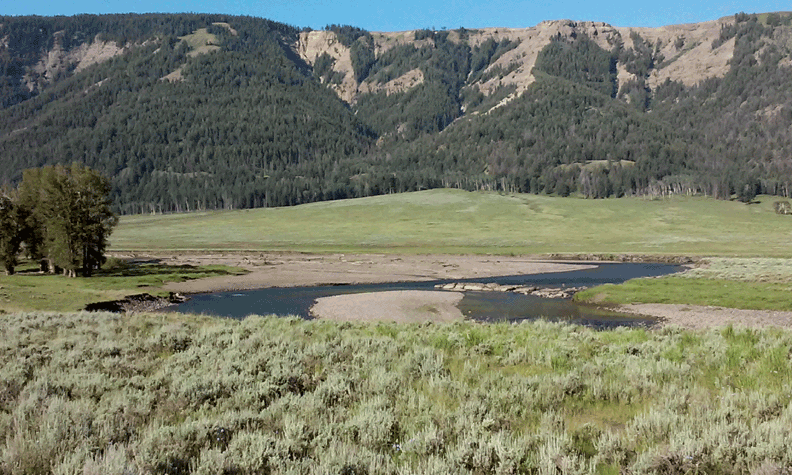
The Lamar River Valley
Kurt Heim says, “The Lamar River watershed, long considered one of the Yellowstone’s most important riverine strongholds for native YCT, is now threatened by invading RBT. In recent years, angler reports and genetic analyses have indicated that RBT are now entering the system and hybridizing with the native YCT.”
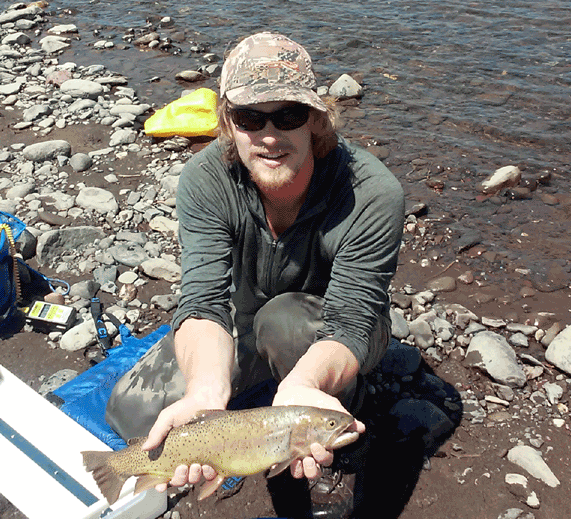
Kurt Heim shows off a native Yellowstone cutthroat trout
Kurt’s first objective is to determine locations and timing of spawning by YCT, RBT and hybrids in the Lamar River drainage. He is using radio-telemetry and passive integrated transponder (PIT) tag technology. (If your dog has a “chip ID”, this is the same sort of technology). Radio tags are surgically implanted in larger fish to actively transmit a radio signal which can be tracked over long distances for a couple of years. PIT tags are smaller, about the size and shape of the plastic end on a shoelace. They can be easily slipped under the skin next to the dorsal fin on smaller fish. PIT tags don’t transmit a signal via battery power. Instead, a magnetic coil is energized to transmit a signal when the device comes in close proximity to a resonating antenna.
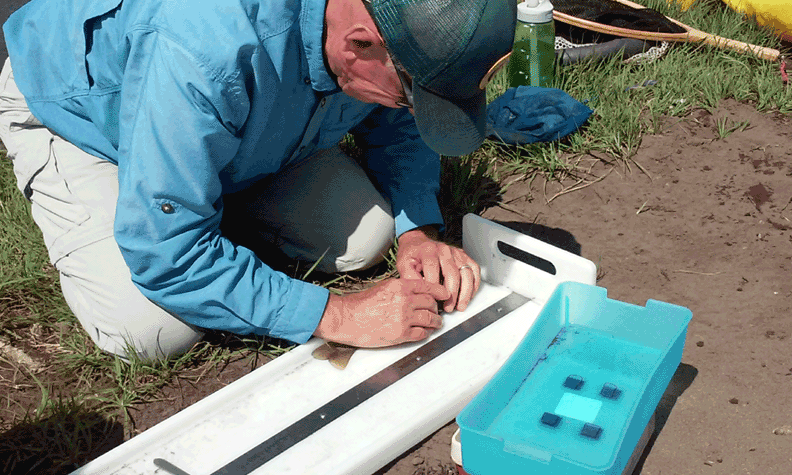
Bill Voigt inserts a PIT tag in a YCT
A fish carrying a PIT tag can be found by a guy walking the streambank holding an antenna; or, a stationary antenna mounted in the stream can record tagged fish as they swim by. Recording the movements of individual fish will help determine patterns of spawning and identify areas where hybridization is occurring. Then management actions can be developed and implemented to minimize the RBT threat.
Kurt is also using radio-telemetry tags (RT) to track larger fish. The tags are surgically implanted and actively transmit a radio signal which can be tracked over long distances. The expected battery life of an RT tag is 881 days!
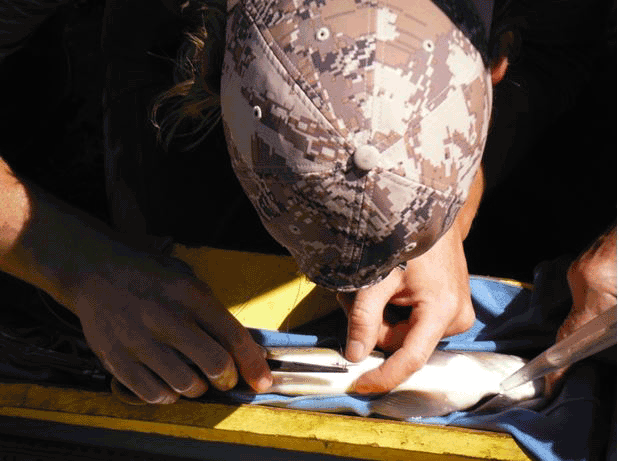
Kurt Heim stitches up a trout after inserting a radio telemetry tag. To the right in the picture, a WDTU volunteer uses a low-tech turkey baster to keep the gills hydrated with anesthetic to keep the fish calm throughout the four and a half minute surgery.
Before Kurt can work his magic, there must be fish caught so that tags can be implanted. This is where the help of the Volunteer Fly Fishing Program comes in. Bill Voigt has been in charge of the volunteer program for over ten years. Typically he signs up a different group of volunteers for each week of the summer season. 2016 will be the second year of data collection for Kurt’s project. Individuals can sign up directly with Bill Voigt to volunteer for any week for which there are openings. Bill can be contacted at . WDTU President Tim Toohey has taken the step of asking Bill Voigt to block out the week of July 18-22, 2016 for WDTU members. Bill agreed. Ten good volunteer fishermen from our chapter are needed for that week. Eight have already signed up. Contact Tim Toohey or Rick Dornfeld for details.
